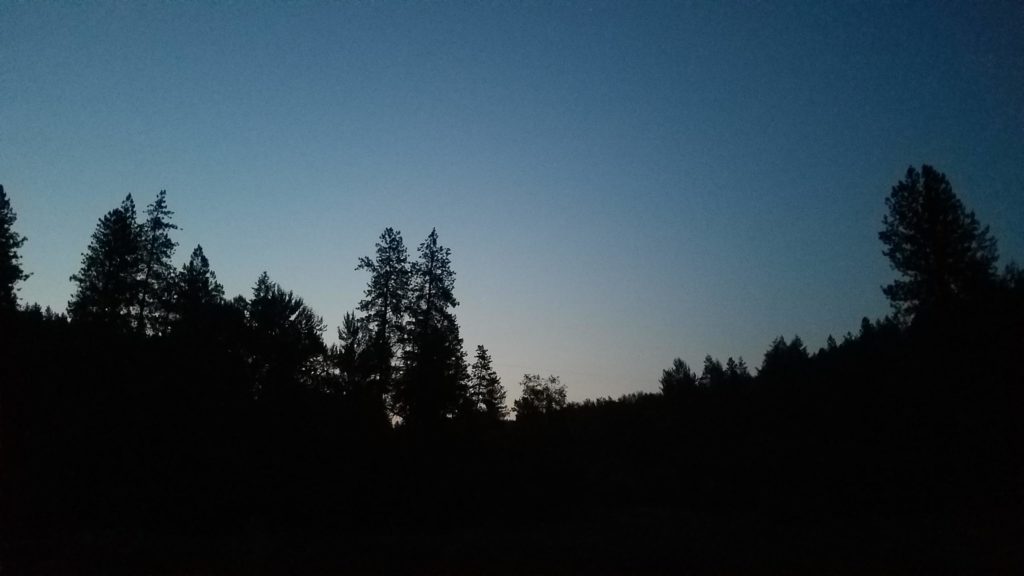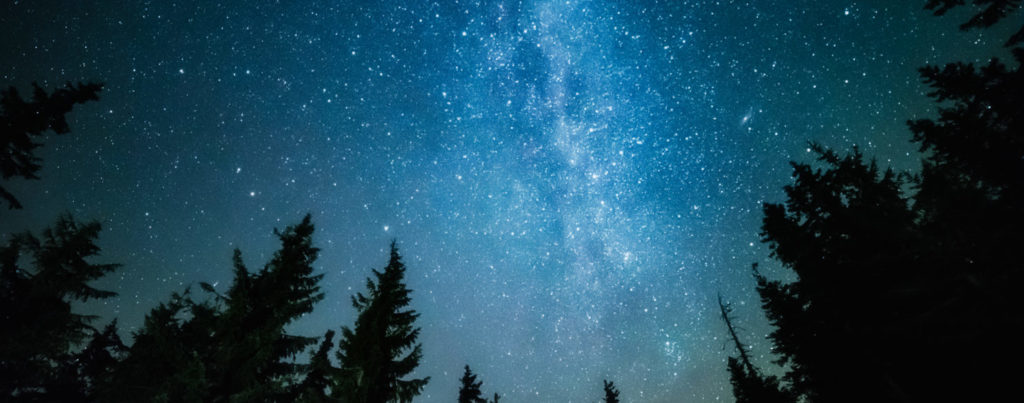By Heidi Lasher
Summers in grade school, my friend Becky and I would occasionally pile blankets and pillows on thin mattresses on our back deck and sleep outside. I remember those nights for the long hours it took—after whispering secrets, adjusting blankets, and listening for danger—to fall asleep.
What kept me awake were the stars, those alien suns and planets dotting the night sky. I knew only a few constellations, nothing about black holes, very little about the Milky Way, but I wondered about it all. So vast the universe. So small my pillow.
The first week this past January, I met a friend for coffee downtown. She told me she was less interested in declaring New Year’s resolutions than in achieving small, low-stakes monthly goals. Smaller chance of failure, she said, taking a sip of coffee.

Lit by the brilliance of this idea, I went home and made a list of small things I could do each month to improve my experience of life. Meditation is on the list. Daily gratitude. Less drinking. More time in the wilderness. Kissing. Reading a wider array of authors.
And, in homage to my childhood, nights sleeping under the stars: going outside after dark for a series of “night hikes.”
“Will you carry a flashlight?” asked my friend. “Probably not,” I said, remembering my husband’s assertion that our eyes can adjust to the dark given time.
And so, on my very first night hike, I groped in utter blackness down the slope by our house, baby-stepping into the winter grass and cursing the wan stars, the unrisen moon, and the man I married. I made it only a few hundred yards before turning back to the well-lit house.
Slowly, night after night, as moon waxed toward fullness, I saw more and more. The outline of the Ponderosa trees, patches of old snow, my neighbor’s fence. I began to hear noises that raised my arm hairs: coyote howls, a rustling in the bushes, someone’s sputtering generator.
My eyes craved light. A neighbor’s porch light, the streetlamp, the glow of downtown Spokane in the distance. The sky itself changed from inky black to diffuse gray to yellow, depending on the size of the moon, the thickness of the clouds, and the brightness of snow on the ground.
Eventually, I found myself connected to it all, a person walking inside a great universe, breathing it all in.
Night hiking does not require a flashlight, although it can make it easier and safer, or a specific destination. And it can be accomplished in 15 minutes. But the best hikes are longer, taken with a friend, a thermos of cocoa, and plenty of warm layers, when the moon and stars shine in equal measure.
Choose a familiar place that feels safe, and give your eyes time to adjust to the dark. You’ll be rewarded with wonder. How vast the universe. How small the world.
Originally published as “Night Hikes: Make the Most of Short Spring Days” in the March-April 2022 print issue.
Heidi Lasher is a freelance writer and communications consultant. She wrote “10 Ways To Love Your Public Lands & Waterways” for the September-October 2022 issue.

Tips for Night Hiking in the Inland NW
Hiking after the sun sets is a great way to make the most of short spring days, when hitting the trail before dusk might not be an option. Find night hiking tips and Inland NW night hiking trail recommendations from Holly Weiler in the OTO archives from 2018. (OTO)
Originally published as “Night Hikes On Short Spring Days” in the March-April 2022 print issue.













